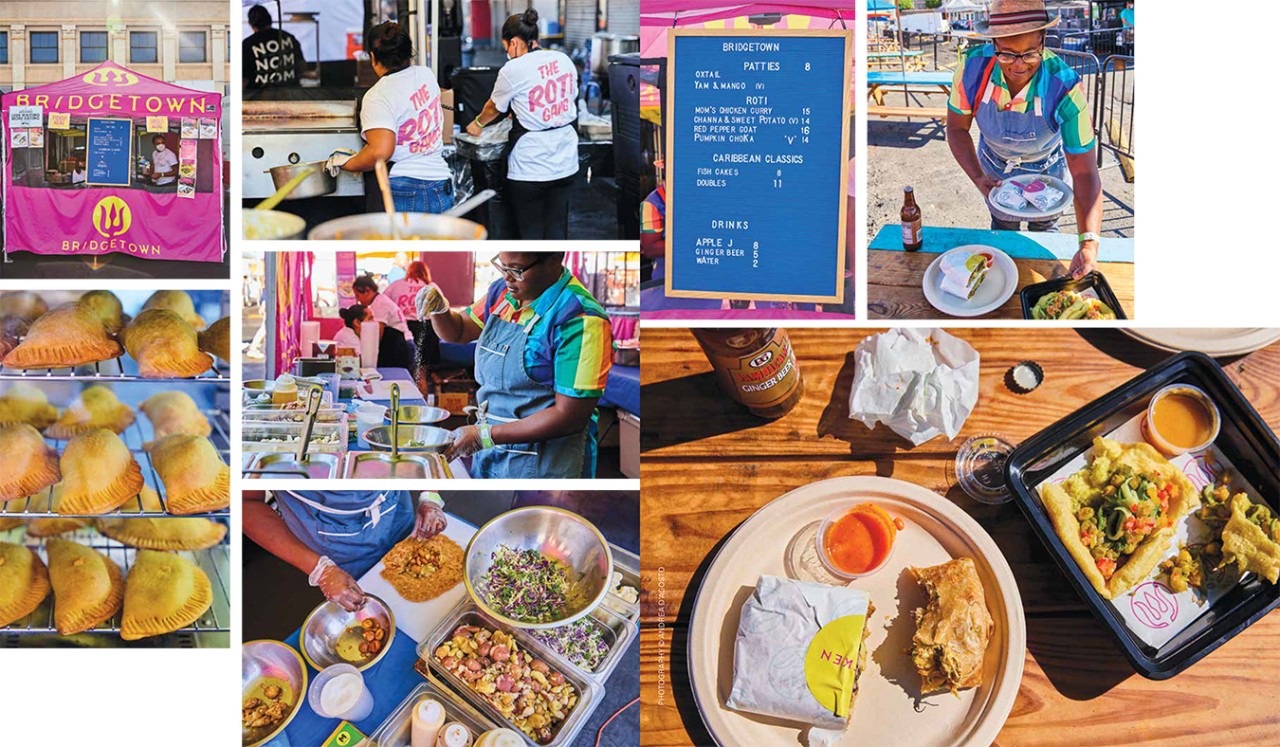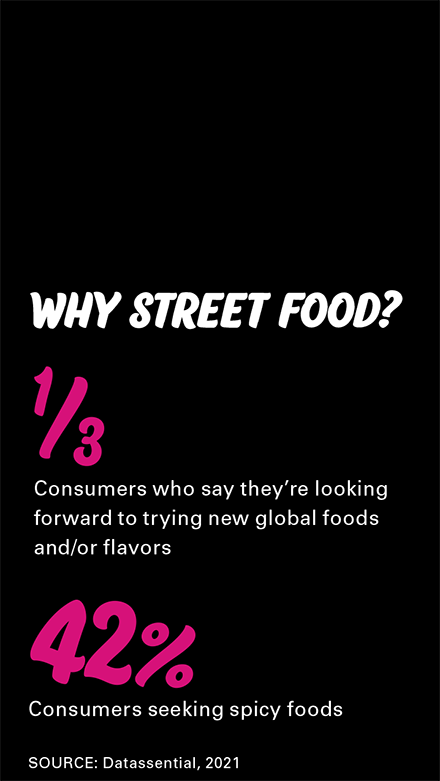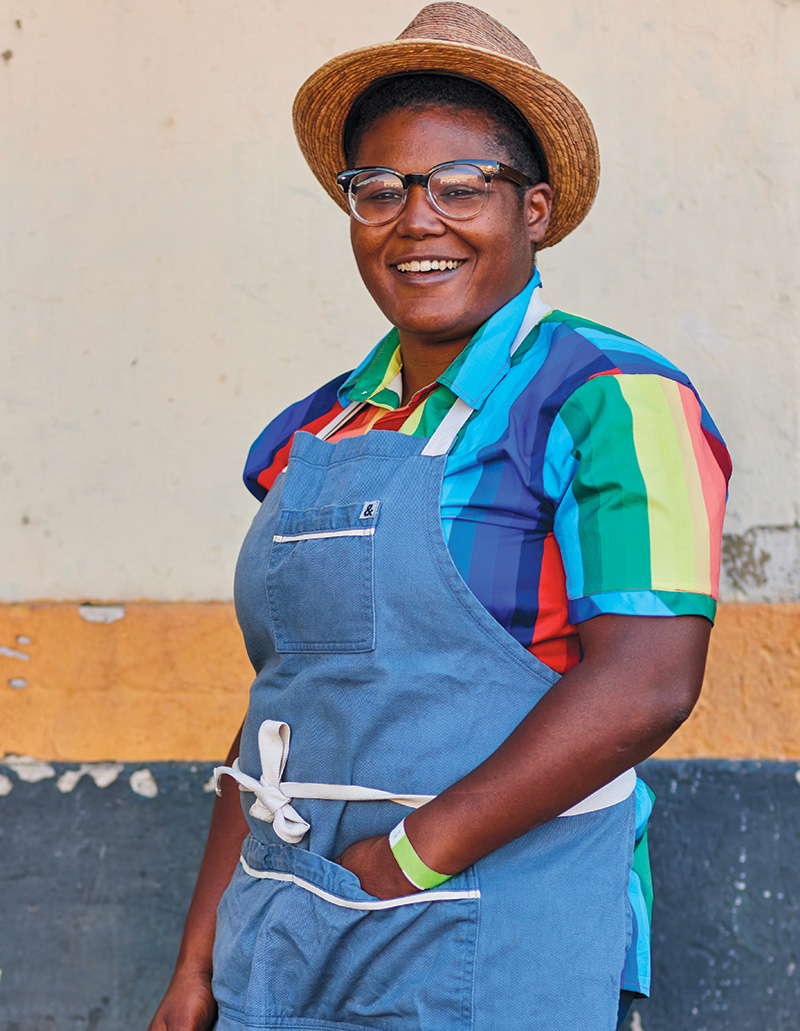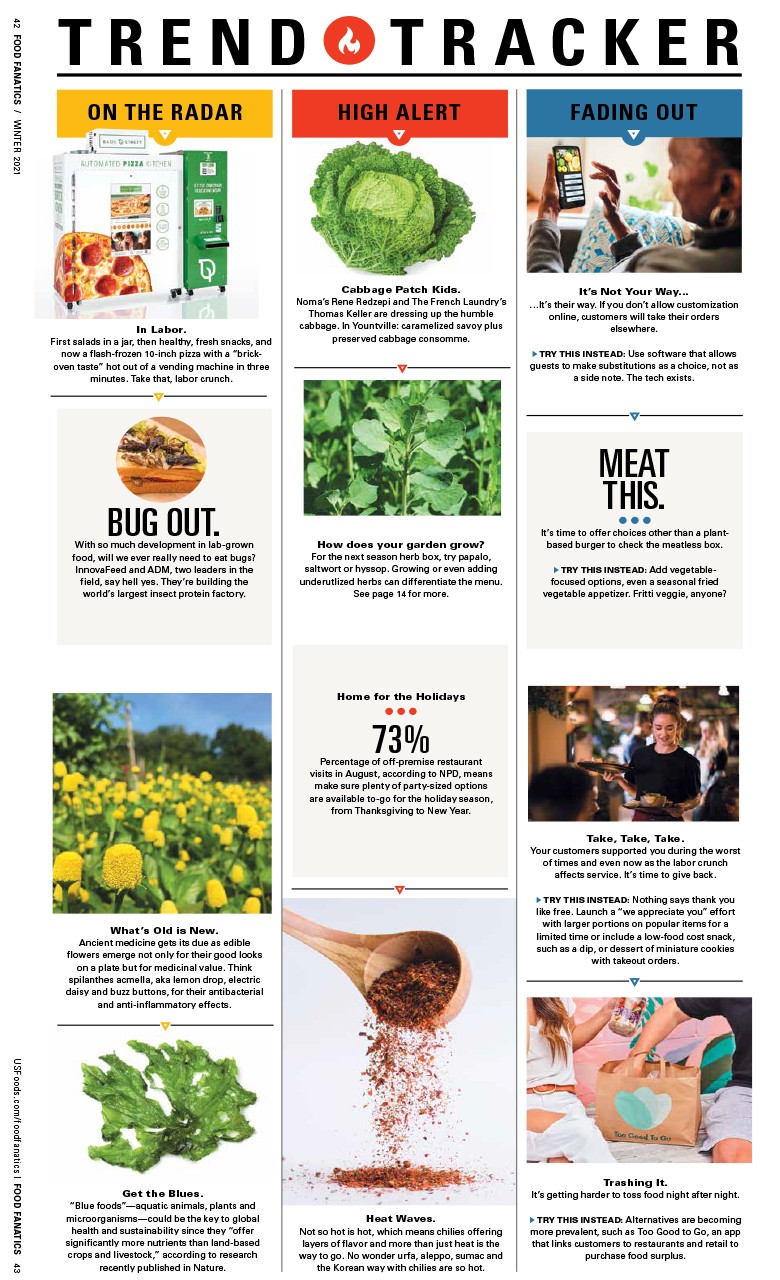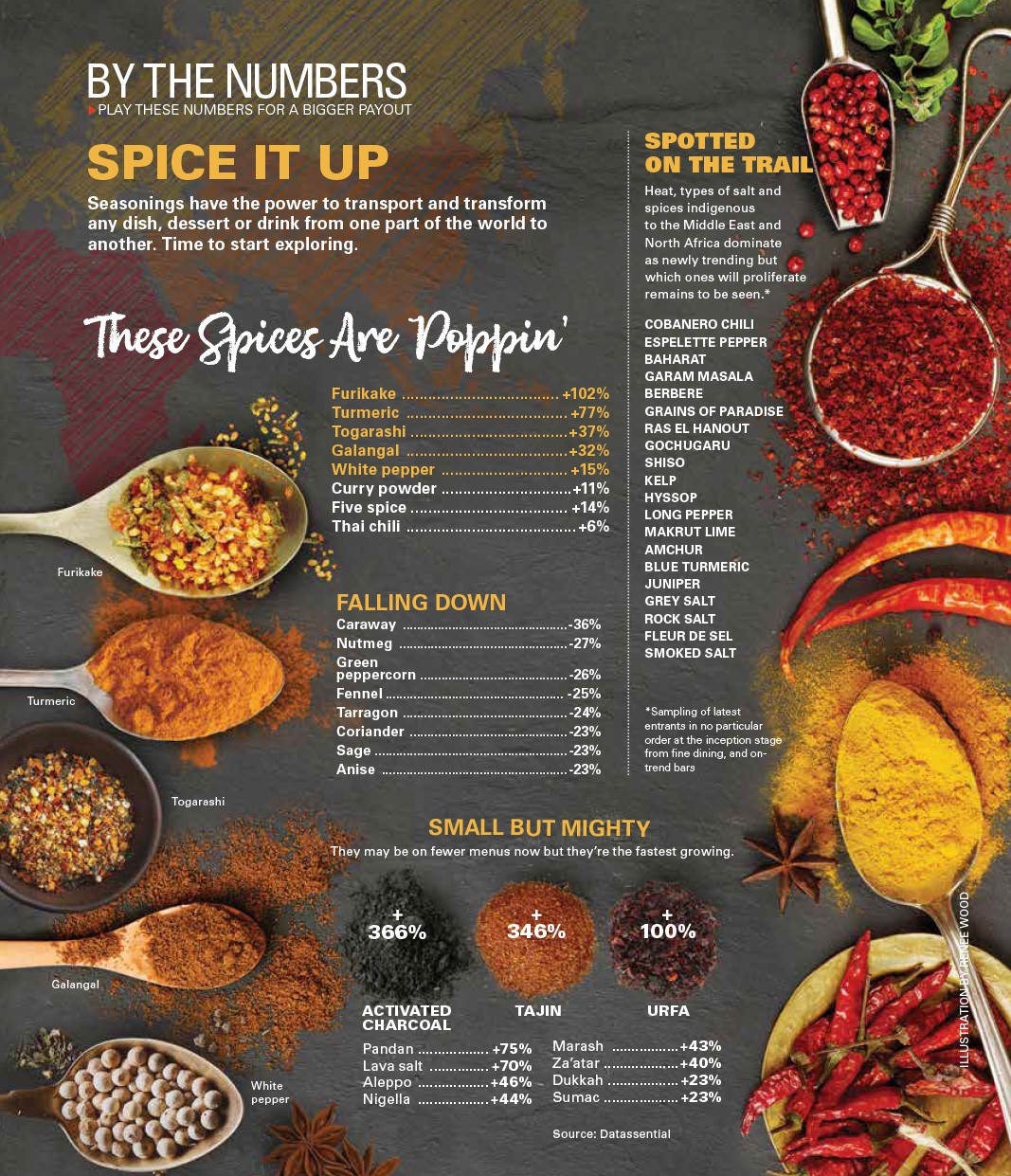STREET FOODS THAT ROCK
Rolled, skewered or cradled
 Whether it’s a hearty Caribbean roti, a pillowy Peruvian bao or a crunchy Korean corn dog, chefs and restaurateurs are leaning into casual, exciting and oh-so-Instagrammable global street foods, infused with the regional flavors and ingredients that reflect their local markets.
Whether it’s a hearty Caribbean roti, a pillowy Peruvian bao or a crunchy Korean corn dog, chefs and restaurateurs are leaning into casual, exciting and oh-so-Instagrammable global street foods, infused with the regional flavors and ingredients that reflect their local markets.
Their popularity – driven by portability and pent-up wanderlust – make such hand-held foods of the moment, but the appeal will be long-lasting. The foods tend to have lower price points, allowing for greater profit margins.
“They’re convenient and affordable,” says Carlos Altamirano, one of San Francisco’s best-known ambassadors of Peruvian cuisine.
Labor Relief
- ❱ Cross-utilize ingredients for bao fillings
- ❱ Purchase bao buns from purveyors
- ❱ Go with frozen Korean corn dogs
- ❱ Opt for premade/bottled sauces
Recipes from this article:
PERUVIAN BAO
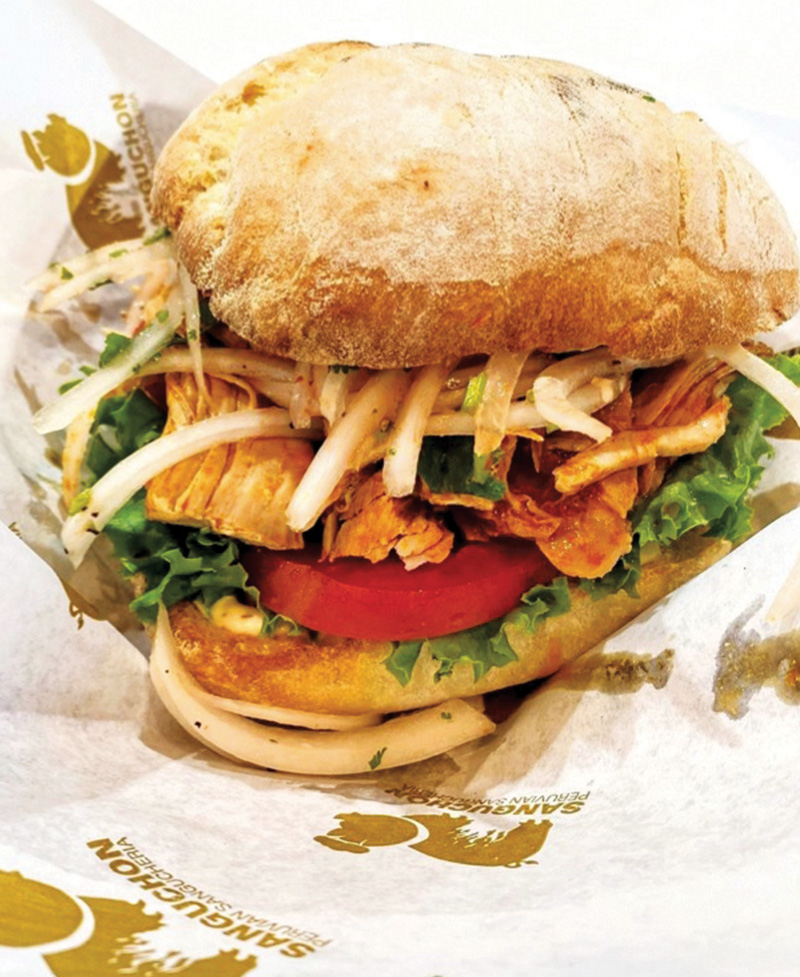 Ever since the first documented Chinese immigrants arrived in Peru seeking work in the mid-1800s, Chinese and Peruvian cuisines have become deeply intertwined – coining its own term denoting fusion of the two, chifa. The convergence has evolved into handheld packages, most notably baos and sanguches, all-day street-food sandwiches with interchangeable ingredients.
Ever since the first documented Chinese immigrants arrived in Peru seeking work in the mid-1800s, Chinese and Peruvian cuisines have become deeply intertwined – coining its own term denoting fusion of the two, chifa. The convergence has evolved into handheld packages, most notably baos and sanguches, all-day street-food sandwiches with interchangeable ingredients.
Chef/owner of several Bay Area restaurants, including Mochica and Barranco, Altamirano recently debuted a brick-and-mortar outpost of Sanguchon, his popular fleet of Peruvian sangucheria trucks. “Street vendors are very popular and offer something for everyone. You could grab one for any meal – breakfast, lunch or dinner.”
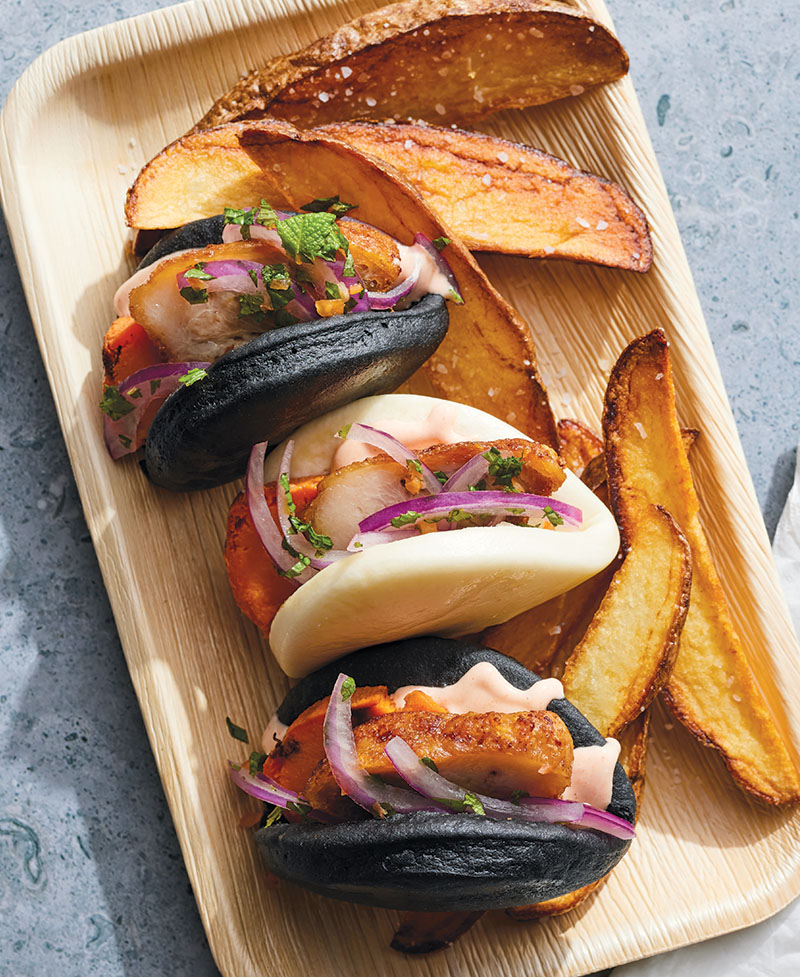 While Sanguchon’s menu sticks mostly to tradition, chefs are reaching for the pillowy Chinese bao as the consummate fusion vehicle for creative sanguche fillings. At beloved all-day Peruvian restaurant Ceviche in London’s Soho neighborhood, the Peruvian bao bun stars tempura sea bass, salsa criolla and amarillo chili mayo on a soft steamed bun.
While Sanguchon’s menu sticks mostly to tradition, chefs are reaching for the pillowy Chinese bao as the consummate fusion vehicle for creative sanguche fillings. At beloved all-day Peruvian restaurant Ceviche in London’s Soho neighborhood, the Peruvian bao bun stars tempura sea bass, salsa criolla and amarillo chili mayo on a soft steamed bun.
Chicago Peruvian eatery Tanta has made the sanguche bao con chicharron – a jet-black bao topped with crispy pork belly and fresh criolla salad – a staple of the restaurant’s brunch and happy hour menus. To make the sandwich, executive chef Jesus Delgado starts by brining pork belly for 12 hours, then confiting and crisping it in the oven. He makes charcoal-hued bao (thanks to charcoal flour and a few dabs of black food coloring) in-house then smears it with fiery rocoto mayo. He fills the bao with pork belly, sliced sweet potato and minty criolla salad for brightness.
KOREAN CORN DOGS
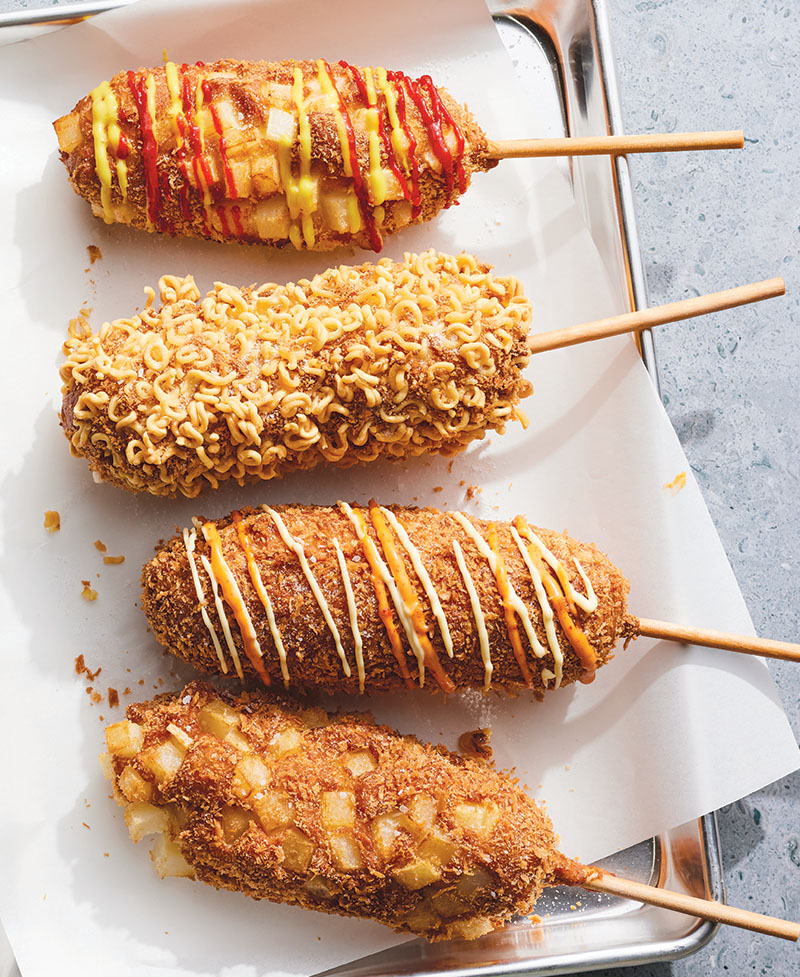 Battered and fried hot dogs on a stick became popular in Korea in the 1980s, according to the Korean Culture and Information Service. Before long, cart vendors began crafting thicker batter (made from all-purpose and rice flour instead of corn) that allowed them to affix extras on the outside. Complementary flavors started mildly with a shake of sugar and salt and a drizzle of ketchup and mustard, but quickly progressed to panko breadcrumbs, crispy cubed potatoes and roasted soybean powder with a drizzle of condensed milk. Naturally, corn dog-loving Americans have quickly embraced this cartoonishly photogenic Korean street food on a stick; specialty franchises like Two Hands, Mochinut and Oh K-Dog & Egg Toast are expanding at breakneck pace from Los Angeles to Houston and Queens, New York, to Fayetteville, Arkansas. Oh K-Dog’s battered corn dog fillings span mozzarella to squid ink, and nostalgic sprinkle toppings include honey butter, onion flake and snowing cheese. At Glenview, Illinois-based Holy Cow, the toppings smack decidedly of childhood; Fruity Pops are coated in multicolored crunchy rice puffs (think Fruity Pebbles cereal), while the Flaming Cheetah is blanketed with ground Flamin’ Hot Cheetos.
Battered and fried hot dogs on a stick became popular in Korea in the 1980s, according to the Korean Culture and Information Service. Before long, cart vendors began crafting thicker batter (made from all-purpose and rice flour instead of corn) that allowed them to affix extras on the outside. Complementary flavors started mildly with a shake of sugar and salt and a drizzle of ketchup and mustard, but quickly progressed to panko breadcrumbs, crispy cubed potatoes and roasted soybean powder with a drizzle of condensed milk. Naturally, corn dog-loving Americans have quickly embraced this cartoonishly photogenic Korean street food on a stick; specialty franchises like Two Hands, Mochinut and Oh K-Dog & Egg Toast are expanding at breakneck pace from Los Angeles to Houston and Queens, New York, to Fayetteville, Arkansas. Oh K-Dog’s battered corn dog fillings span mozzarella to squid ink, and nostalgic sprinkle toppings include honey butter, onion flake and snowing cheese. At Glenview, Illinois-based Holy Cow, the toppings smack decidedly of childhood; Fruity Pops are coated in multicolored crunchy rice puffs (think Fruity Pebbles cereal), while the Flaming Cheetah is blanketed with ground Flamin’ Hot Cheetos.
“Street vendors are very popular and offer something for everyone. You could grab one for any meal—breakfast, lunch or dinner.”.
— Chef Carlos Altamirano of several San Francisco restaurantsCARIBBEAN ROTI
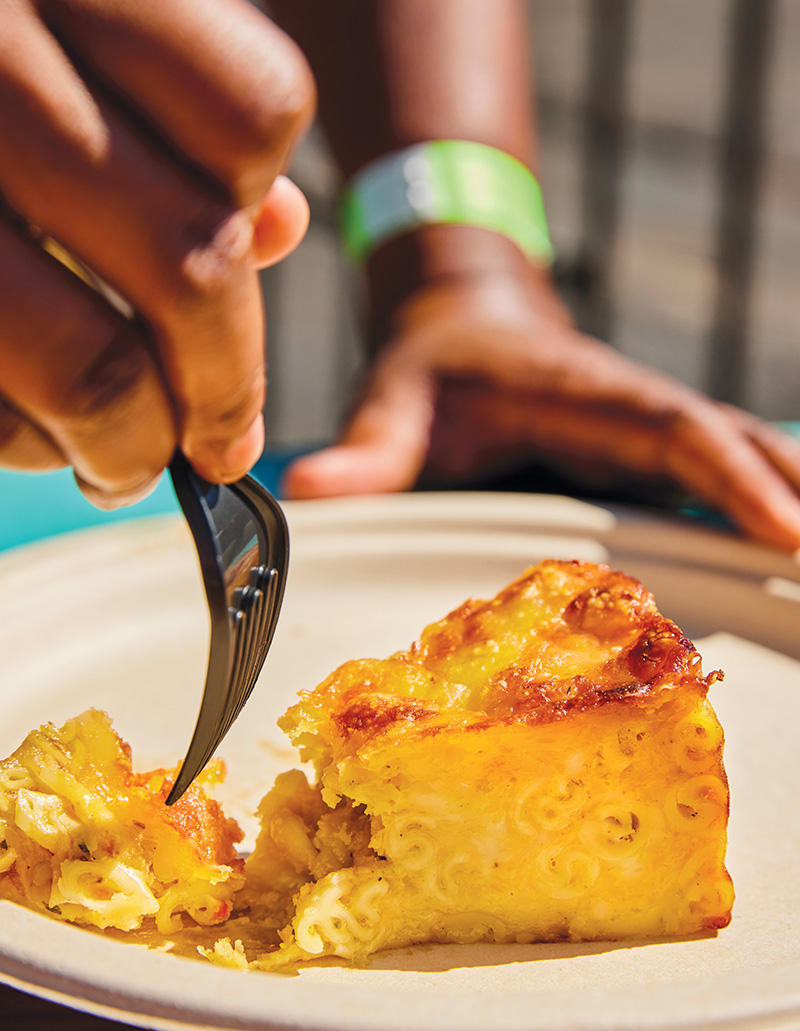 Since laborers from India first introduced roti flatbreads to the Caribbean islands, they’ve been embraced as a means to sop up the sauce of the islands’ ubiquitous curries and stews. In Miami, where these days Guyanese roti are almost as popular as Cuban sandwiches, Sheiks Bakery & Roti Cafe boasts a stellar veggie roti, in which sweet pumpkin mash, spinach, potato and curried channa are rolled up like a savory Caribbean burrito. At pop-up Caribbean restaurant Bridgetown Roti in Los Angeles, chef/owner Rashida Holmes channels her Barbadian roots and Los Angeles restaurant background (at vegetable-obsessed Botanica) with crisp yet tender paratha-style roti that she hand-rolls, before wrapping around comforting fillings like fiery smoked goat shoulder with roasted peanut sauce and fried potatoes. Holmes’ Mom’s Curry Chicken Roti is a buttery handheld hug packed with succulent, curry-rubbed chicken thighs, crispy local potatoes, turmeric-spiced cabbage, cilantro and scallions.
Since laborers from India first introduced roti flatbreads to the Caribbean islands, they’ve been embraced as a means to sop up the sauce of the islands’ ubiquitous curries and stews. In Miami, where these days Guyanese roti are almost as popular as Cuban sandwiches, Sheiks Bakery & Roti Cafe boasts a stellar veggie roti, in which sweet pumpkin mash, spinach, potato and curried channa are rolled up like a savory Caribbean burrito. At pop-up Caribbean restaurant Bridgetown Roti in Los Angeles, chef/owner Rashida Holmes channels her Barbadian roots and Los Angeles restaurant background (at vegetable-obsessed Botanica) with crisp yet tender paratha-style roti that she hand-rolls, before wrapping around comforting fillings like fiery smoked goat shoulder with roasted peanut sauce and fried potatoes. Holmes’ Mom’s Curry Chicken Roti is a buttery handheld hug packed with succulent, curry-rubbed chicken thighs, crispy local potatoes, turmeric-spiced cabbage, cilantro and scallions.
